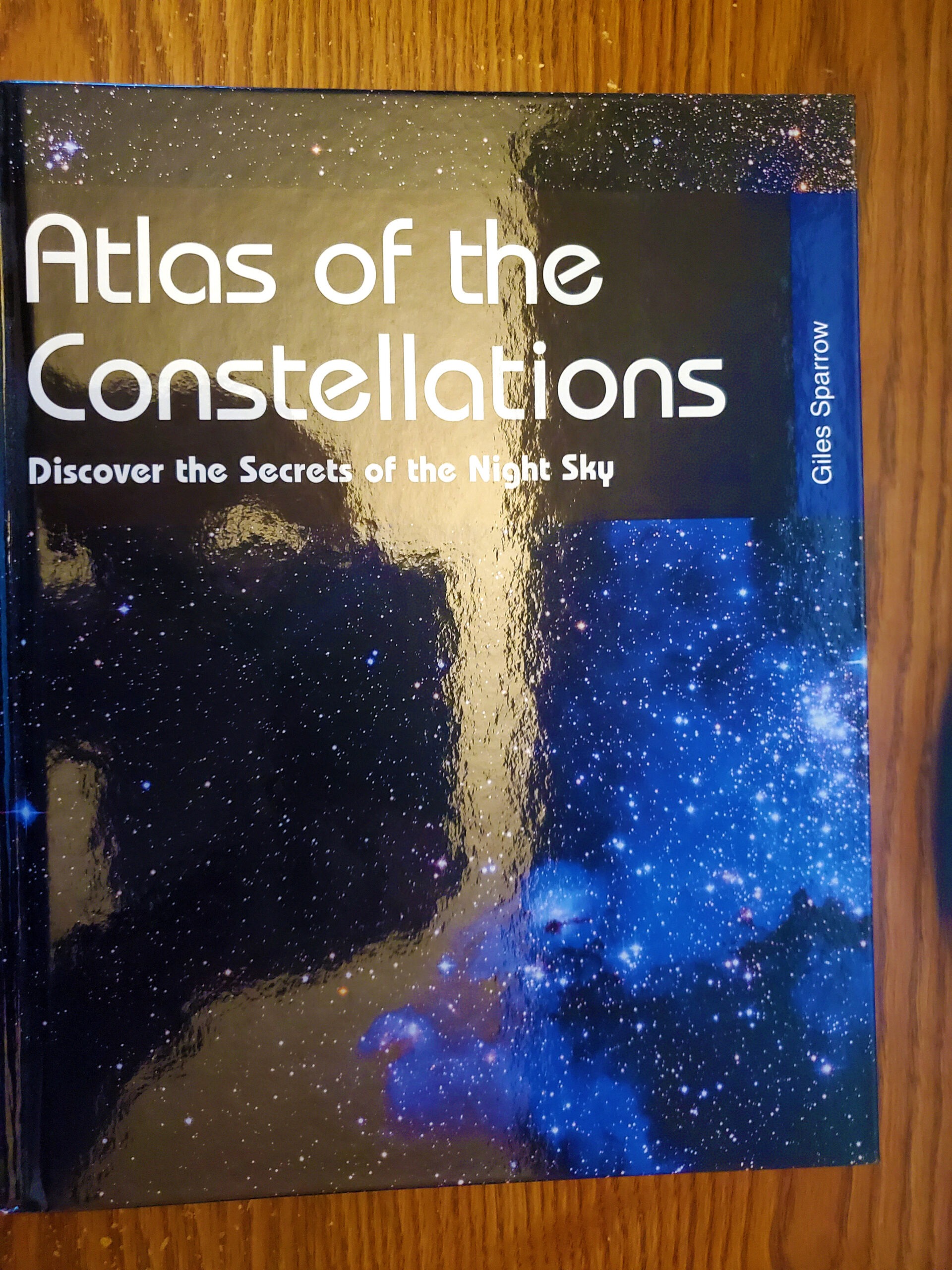If you want to begin stargazing, there are a few free tools that can help you understand the night sky. On your computer you can install a free-software planetarium such as Stellarium. On your phone you can install Stellarium or Sky Map. These are powerful and useful apps, but if you are like me, you also want a nice physical book that maybe you can use in the field. I believe that the Atlas by Sparrow is a useful book for the beginner stargazer.
The book is about 8×10 inches and it contains 112 pages. The main division of the book is: introduction, description of the 88 constellations (a page for each constellation), star charts, table of constellations and index. The introductory section describes a few basic ideas related to astronomy. Among the basic ideas we find: a few facts about Ptolemy and his book called “Almagest”, Bayer’s system of naming the stars using Greek letters, basic description of the celestial sphere, a description of the Magnitude Scale and a basic description of star properties and other objects like clusters and nebulae. The introduction provides the necessary information to understand the constellation maps.
After the introduction, the book provides a basic description of each constellation on a single page (there are 88 modern constellations). The picture below shows the format of the pages. The individual constellation map shows the pattern of the constellation, its boundary, the name of the more important stars (the ancient names or the Bayer designation), the name of various deep space objects near the constellation, the map coordinates and you can also see if the Milky Way can be seen near the constellation. Each map also has written information about various objects seen on the map. Above each map, you have a paragraph that describes the name of the constellation and another paragraph that describes at what latitude range the constellation is fully visible and the time of the year when the constellation is most visible. Under each constellation map you get a short history of the naming of the constellation and a few basic facts. If the constellation is one of the 48 found in the Almagest, you may get a short description of the ancient myths associated with the constellation.
Towards the end of the book, you have 6 star charts. The first chart shows the sky around the celestial North Pole, the second chart shows the sky around the Square of Pegasus, the third shows the sky around Orion, the forth shows the sky around Ursa Major, the fifth shows the sky around a section of the Milky Way (around Ophiuchus) and the final chart shows the sky around the celestial South Pole. These 6 charts give you a bigger picture of where the constellations are located relative to other constellations.
The last important section is the table of constellations. The table has 4 columns: Constellation, Genitive, English Translation and Origin. The Constellation column has the names of the constellations in alphabetical order. The Genitive column gives the genitive form of the name of the constellations (the names of the constellations are in Latin). The genitive form is useful in the naming of the stars using the Bayer designation. For example, the star that has the ancient name of Castor belongs to the Gemini constellation, but it also has the modern designation Alpha Geminorum. In this case “Geminorum” is the genitive of Gemini (the English translation of our example would be “alpha of Gemini”). The English Translation column is self-explanatory. The Origin column gives the year when the constellation was named, or it says that it is “ancient” (which means is one of the 48 classical constellations found in Ptolemy’s Almagest).
One reviewer from amazon mentioned that on page 76, you find a star called “Algenib” which is usually know as “Mirfak”. It appears that “Mirfak” or Alpha Persei was sometimes called “Algenib”. Right now, the name “Algenib” is reserved only for the star Gamma Pegasi, according to IAU (International Astronomical Union). This is not the only example of confusing nomenclature. The book itself points out that the star Pollux or Beta Geminorum is actually brighter than Castor or Alpha Geminorum. According to the Bayer Designation, the brightest star in the constellation should be the alpha, the next brightest should be beta, and so on following the standard order of the Greek alphabet (which has 24 letters). I believe that in some constellations the gamma star is actually the brightest (like Gamma Draconis). These errors persisted since 1603, when Johannes Bayer wrote Uranometria. This seems to be one of the cases where the tradition trumps logic or truth.
Overall, I can say that I enjoy this book. You get a basic understanding of the map of the night sky and the history or mythology behind the constellations. As a bonus, you also learn a few Latin words and even some biology. I was not aware of flying fish before reading this book (one of the constellations is “Volans” or flying fish). The book can be complemented by the free software I mentioned in the beginning. After I learned more about the constellations I got motivated to take my binoculars and go stargazing in a more dark area of my neighborhood.


